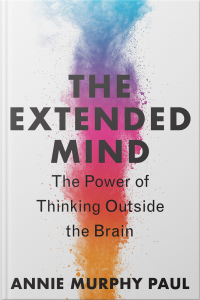By Christian Talbot, President of MSA-CESS

One of my great aha moments as an educator came about a decade ago, when I first visited High Tech High (HTH) in San Diego.
HTH students are assessed largely on the basis of “public demonstrations of learning.” In other words, they prove their learning by teaching others, often through their presentation of team projects. First they teach their classmates in practice rounds, and later they publicly demonstrate their learning to a panel of outside experts and an audience of parents and peers.
During the visit, we were encouraged to interrupt any student anywhere at any time to ask them questions. As I talked to them, it dawned on me that HTH designs for “social learning,” because students often play the role of teacher. The results? Deep understanding of content and deep curiosity to learn more.
This makes very good sense, because, as Annie Murphy Paul points out in The Extended Mind:
“We think best when we think socially. […] Humans are not especially good at thinking about concepts; our ability to think about people, however, is superlative. […] Indeed, scientists have theorized that we humans developed our oversized brains in order to deal with the complexity of our own social groups” (all emphases in the original).
Yet asking students to teach others contradicts the dominant mode of K12 schools. I understand why: when it comes to peer-to-peer learning, group projects, and project-based learning, the devil is in the details of instructional technique and assessment design. [1]
Still, educators should invest the time to understand those techniques, because allowing students to teach others produces exceptional learning. [2]
How many aha moments can we unlock for students by shifting some of the focus from what we want “to cover” to what they can teach us and their peers?
Annie Murphy Paul will talk about this and take some of your questions on Thursday, February 16 at 11 am ET. Please join us! You can register here.
[1] We can’t merely tell kids to work together on a problem and expect gold. Fortunately there are high quality resources from places like PBLWorks, HTH Graduate School of Education, Global Online Academy, and many others.
[2] As Paul says in her book, “When explaining academic content, the tutor is forced to make explicit the details she might herself have glossed over; the gaps in her own knowledge and learning become visible. When directing the tutee to the most important aspects of the subject, and drawing connections among these features, the tutor is herself led to engage in a deeper level of mental processing. When fielding the pupil’s questions, and posing questions of her own, the tutor is obliged to adopt a ‘metacognitive’ stance toward the material, consciously monitoring what her pupil knows and what she herself knows.” For more validation from the field, take a look at In Search of Deeper Learning by Jal Mehta and Sarah Fine from Harvard’s Graduate School of Education.

